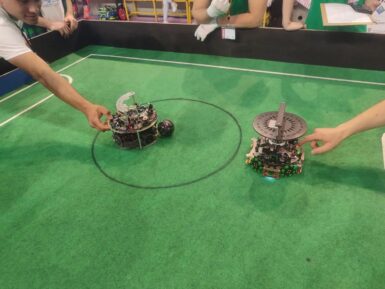
Overview
Grove-Temperature & Humidity Sensor Pro is a high accuracy temperature and humidity sensor based on the DHT22 module (also known as AM2302 or RHT03). High-cost performance and high precision make it ideal for temperature and humidity monitoring of Arduino and Raspberry Pi, you can also use it to make a thermometer and hygrometer.
The DHT22 includes a capacitive humidity sensor and a high precision temperature sensor. The range of humidity sensor is 0 to 99.9 %RH with ±2% accuracy while the temperature sensor ranges from -40 to 80℃ with ±0.5℃ accuracy. With the help of a built-in 8-bit microcontroller, the DHT22 converts the analog output of those two sensors to the digital signal, and output both temperature and humidity data via a single pin.
Compared with the DHT11, this product has higher precision and wider measurement range, but the usage and code are almost the same. Simply put, if you need higher measurement accuracy, this product will be a better choice.
Tech specs
|
Item |
Min |
Norm |
Max |
Unit |
|
VCC |
3.3 |
- |
6 |
V |
|
Measuring Current Supply |
1 |
- |
1.5 |
mA |
|
Standby Current Supply |
40 |
- |
50 |
uA |
|
Measuring range (Humidity) |
5% |
- |
99% |
RH |
|
Measuring range (Temperature) |
-40 |
- |
80 |
°C |
|
Accuracy(Humidity) |
- |
- |
±2% |
RH |
|
Accuracy (Temperature) |
- |
- |
±0.5 |
°C |
|
Resolution (Humidity) |
- |
- |
0.1% |
RH |
|
Resolution (Temperature) |
- |
- |
0.1 |
°C |
|
Repeatability(Humidity) |
- |
- |
±0.3% |
RH |
|
Repeatability (Temperature) |
- |
- |
±0.2 |
°C |
|
Long-term Stability |
- |
- |
±0.5% |
RH/year |
|
Signal Collecting Period |
- |
2 |
- |
S |
|
Respond Time 1/e(63%) |
6 |
- |
20 |
S |
Get Inspired

Learn to set up an Arduino Nano RP2040 Connect to use MicroPython.

Team Ikaro is a vibrant group of high school students from the Pacinotti Archimede Institute in Rome, sharing a strong passion for electronics and turning heads in the world of robotics! Specializing in Soccer Lightweight games (where robot-soccer players compete to score goals on a miniature field), they clinched the first place at the Romecup 2024 and won Italy’s national Robocup in Verbania earlier this year – earning the right to compete in the world championships in Eindhoven, where they placed third in the SuperTeam competition. The brains behind the bots Utilizing the versatile Arduino Nano RP2040 Connect, the team has crafted highly efficient robots that feature ultrasound sensors, PCB boards, a camera, four motors, a solenoid kicker and omni-directional wheels, all meticulously assembled in the school’s FabLab. Mentored by professor Paolo Torda, Team Ikaro exemplifies the spirit of innovation and teamwork bringing together three talented students: Francesco D’Angelo, the team leader, focuses on system design and mechanics; Flavio Crocicchia, the software developer, ensures the robots’ brains are as sharp as possible; Lorenzo Addario specializes in camera software, making sure the robots can “see” and react swiftly on the field. Their combined efforts have led to a seamless integration of hardware and software, and established a foundation of passion and ambition for future success in their careers. Future goals After their first taste of global competition, Team Ikaro is determined to continue refining their robots, leveraging every bit of knowledge and experience they gain – whether in the classroom, lab, or live challenges. At Arduino, we are proud to sponsor such brilliant young minds and look forward to seeing what they will accomplish next!









